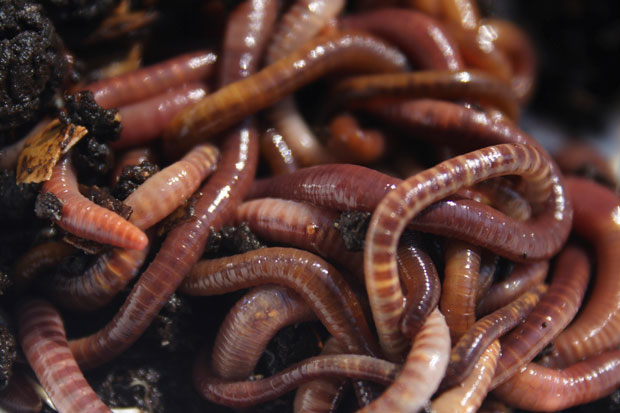Education of a worm farmer
2013-06-25T08:14:37+10:00
After his first worm farm was transformed into an invertebrate iceblock by a black frost six years ago, JUSTIN RUSSELL decides to have another go after discovering a worm farm kit at the back of his shed.
I was looking through one of my garden sheds the other day, in a vague attempt to get the space organised, and lo and behold, sitting in the corner was a worm farm kit I’d completely forgotten about. A neighbour gave it to me six years ago. The farm preformed nicely for the first six months. But in the winter of 2007 we got walloped by a black frost that registered -10 on the thermometer and literally froze the poor worms solid.
I haven’t done any worm farming since. My excuse is that I haven’t needed to. Our house is connected to an on-site sewerage treatment plant which is essentially a big worm farm that recycles our black and grey water and irrigates a stonefruit orchard via underground driplines. I’m also fortunate enough to have space for a flock of chickens, so nearly all of our kitchen scraps go to them, and in turn, we harvest their eggs and regularly toss their manured bedding onto the compost.
But finding the worm farm kit in my shed has reignited a spark and I’m keen to give it another go. I’ll do things differently this time around. For one, I’ll add only as much scraps as my worm population can support. In my pre-chicken days I gave them too much at once, the scraps sometimes went foul and attracted vermin and vinegar flies. I’ll make sure the farm drains properly. Last time some of layers got excessively wet and the worms drowned. And finally, I’ll keep the farm warmer during winter.
This final point is often overlooked by worm farmers in temperate areas, who like me, probably keep the worms cool in summer but fail to keep them happy when the temperature drops below zero. What I think will work is to locate the farm where it gets some gentle afternoon sun, which will warm the black boxes and retain some heat during the night. This, combined with an insulating cover (ie and old blanket), should keep the little wrigglers nice and toasty. Wish me luck!






